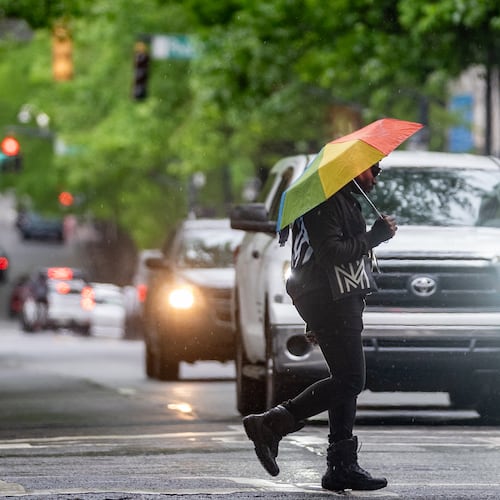Atlanta’s wet weather often prompts flash flood warnings, but for many, going out in the rain is inevitable.
The National Weather Service calls flash floods the top weather-related killer in the United States. Atlantans should remain cautious when commuting through what appears to be a normal rainfall — according to the Federal Emergency Management Agency, almost half of all flash flood fatalities occur in vehicles.
A historic flash flooding event was recorded in Atlanta in 2009. Eight of the 10 fatalities were vehicle-related, and 21 inches of rain fell in 24 hours at the downpour’s heaviest, according to weather reports.
“If you come upon a barricaded or flooded road, Turn Around and Don’t Drown,” a FEMA flash floods fact sheet states.
Flash flood vehicle statistics
A flash flood warning will occur if conditions point to imminently occurring floodwaters. Flash floods can happen when water levels rise in less than six hours. Floods have been reported to rise up to 30 feet, but even a few inches is enough to impede vehicles because of the pressure exerted by the water’s current.
The National Weather Service says the two contributors to these dangerous conditions are rainfall intensity and duration.
FEMA reports:
- 6 inches of water will reach the bottom of most passenger cars, causing loss of control and possible stalling.
- A foot of water will float many vehicles.
- 2 feet of rushing water can carry away most vehicles, including sport utility vehicles and pickup trucks.
Perhaps so many casualties occur because drivers simply don’t know the danger presented by rainfall until it is too late. It’s easy to misjudge the depth of water in road elevation changes, according to weather.com.
“Once your vehicle is floating, the floodwater becomes your steering wheel. If that water is moving, your vehicle could be swept away, tipped on its side or flipped. Rising water can enter your vehicle in a manner of minutes, even seconds. The best advice we can give is to never drive through flood waters of unknown depth."
Credit: JOHN SPINK / JSPINK@AJC.COM
Credit: JOHN SPINK / JSPINK@AJC.COM
What to do if caught in a flash flood while driving
In Atlanta’s humid subtropical climate, rainy days are a part of life. Experts advise to stay alert during rainy weather, because changes could occur rapidly.
Most pressing is the danger of your car tipping over in a flash flood, which allows water to enter the vehicle.
The Weather Channel offers a few tips if you are caught in your car during a flash flood:
- Find a pocket of trapped air, usually against the rear window or roof.
- Roll a window down slowly, take a deep breath and be ready to swim.
- If the window won't open, break the window with a rescue tool (Swiss Army knife, for example).
Keep track of Atlanta weather on AJC.
About the Author
Keep Reading
The Latest
Featured


